Shortly after our tour of the Robert Mills House ended, we made our way across the street to our second historic home tour – the Hampton-Preston House.
Our tour guide from the first house – John – was also our guide for the second house. As we walked to the Hampton-Preston House, he asked where I was from in the UK.
After saying that I was originally from Woking, I followed it up with “it’s just outside of London to the south-west” as no one – even many Brits – know where Woking is. Funnily enough, John knew exactly where Woking was as he’d been there several years ago on a work trip and still has a Woking-branded umbrella!
Anyway, on to the Hampton-Preston House. There was a historic marker out front that provided some background of the property. John had already covered some of that history during our tour of the Robert Mills House. That’s because the Robert Mills House was built for Ainsley Hall; Hall had owned the Hampton-Preston House until Wade Hampton I made him an offer in 1823 he couldn’t refuse.

At 7,500 sq ft, the house itself was very grand – it’s understandable why Wade Hampton was so keen on owning it. Its exterior looks like it’s made of stone, but it’s actually constructed with bricks and covered with stucco.
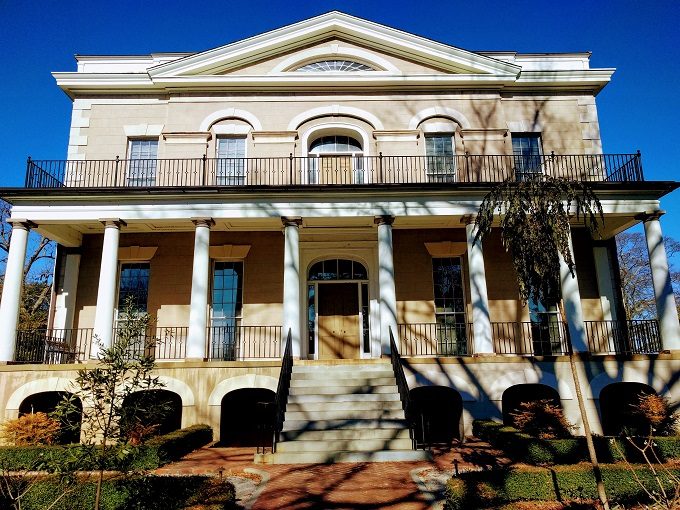
The tour began in the basement. The basement at the Robert Mills House was at ground level, whereas at the Hampton-Preston House you have to walk down five steps. John explained that that’s about as far below ground as they’d have built due to the moisture in the area.

The basement contained displays providing some history about slavery in Columbia. We also learned about other Columbia history, including the fire of February 1865.

In 1890, the house became Presbyterian Institute for Young Ladies with all kinds of courses being offered. The restored mansion was opened to the public as a historic house museum on April 21, 1970.
After spending some time reading the displays, we made our way up to the house’s entrance hall. John explained that we’d only be touring the downstairs area as the four upstairs bedrooms are currently being renovated.
The entrance hall of the Hampton-Preston House was noticeably different to the entrance of the Robert Mills House. Not only was this house non-symmetrical, but the staircase was also accessible from the entrance hall.

To the right was the east parlor room which was decorated in the style of the 1820s-1830s. In the far corner of the room, the table held an ivory domino set which belonged to Wade Hampton II.

The next room we visited was set up as a formal dining room. In the past, the walls of this room were decorated with wallpaper imported from France, but the current walls are painted.
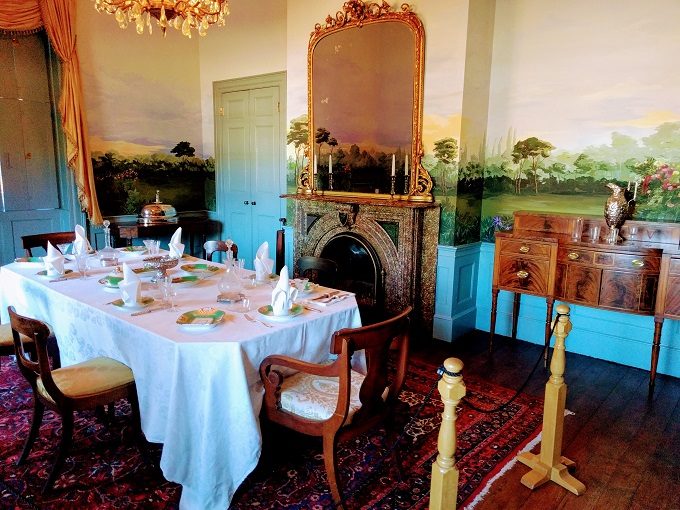
Both the china and napkins on the dining table were originally owned by the Hampton family. The napkins were also folded in the same way that they would’ve been arranged back in the 1800s.
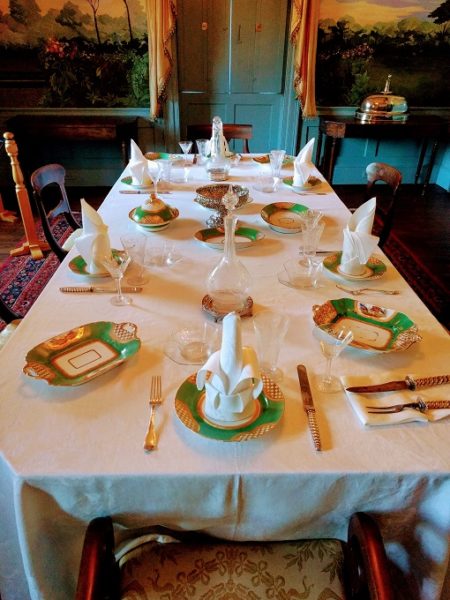
The fireplace in the dining room was faux marble and was actually made from painted slate.
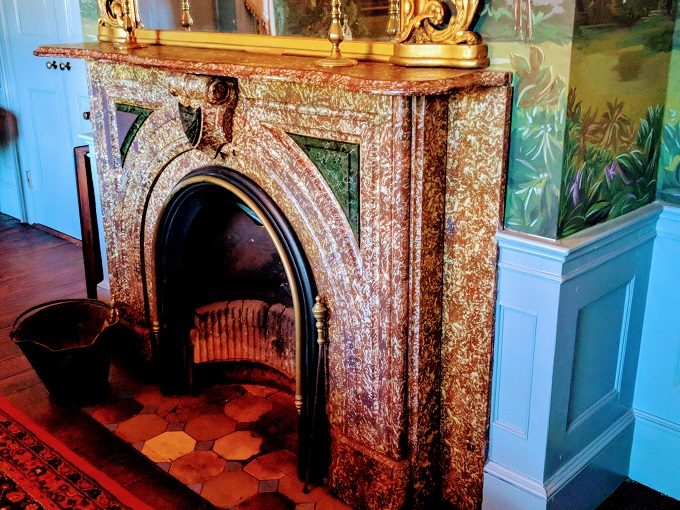
On the side cabinet was a silver jug which was won thanks to his horse winning a race.
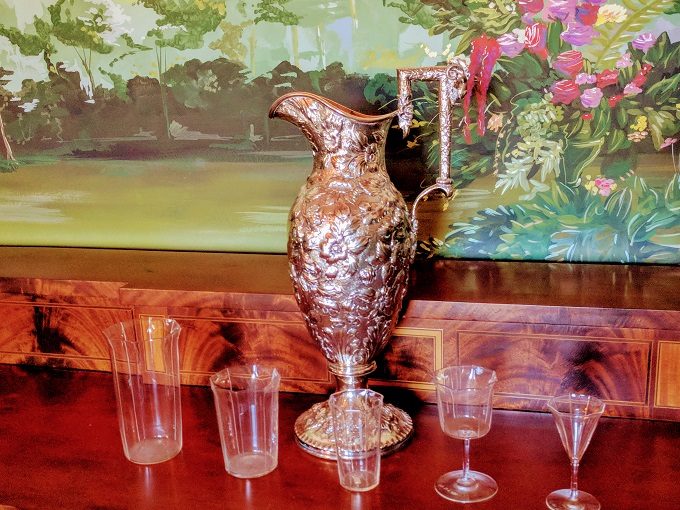
We then made our way to a room which was set up like an 1840s study or drawing room. This would’ve been where the men of the house retired to, so the room was set up with a bookcase, cards, decanters and cigar.
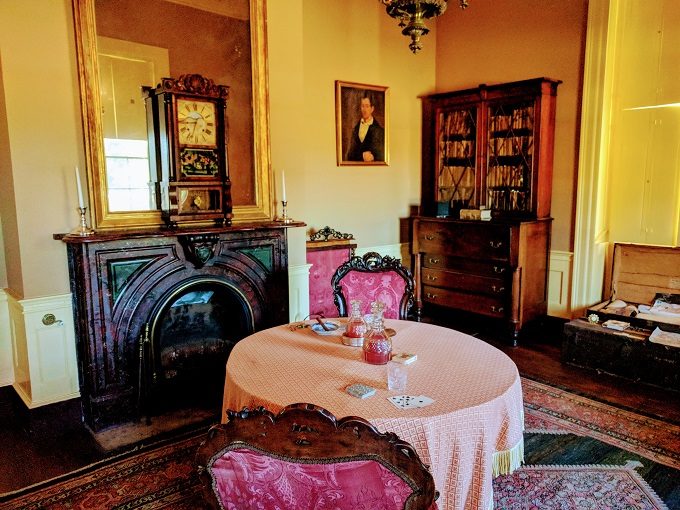
The family traveled a lot, so the room also held a couple of travel trunks containing imported wallpaper and china from England.
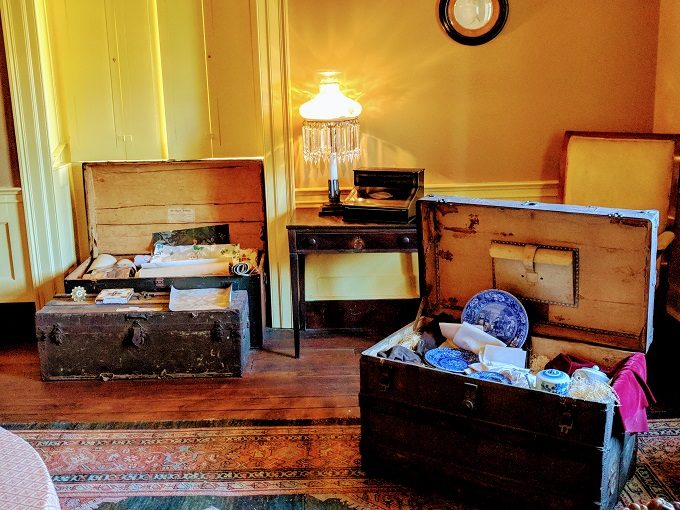
The door entering the room has an original bell which still works, but they don’t ring it during the tour – presumably to ensure it doesn’t break.
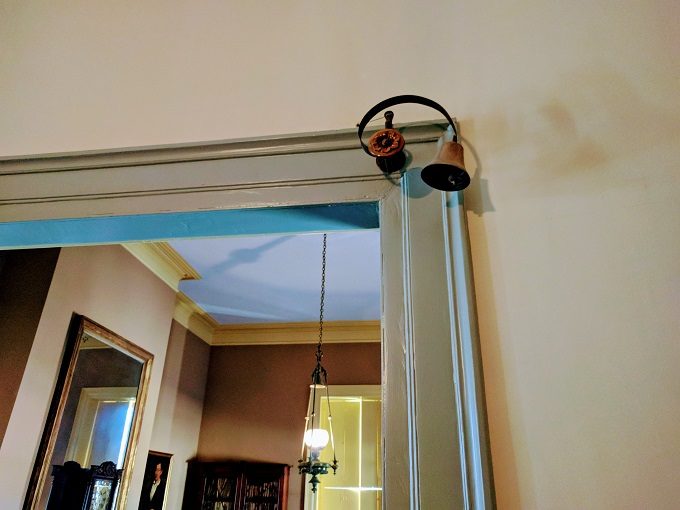
The final room we toured was the the west parlor room which was set up in an 1850s style. It had a slightly creepy-looking painting of two children on the wall. John explained that it’s thought that both children died when young and the painting was finished posthumously, which is why their heads appear to be much larger than their bodies would suggest.
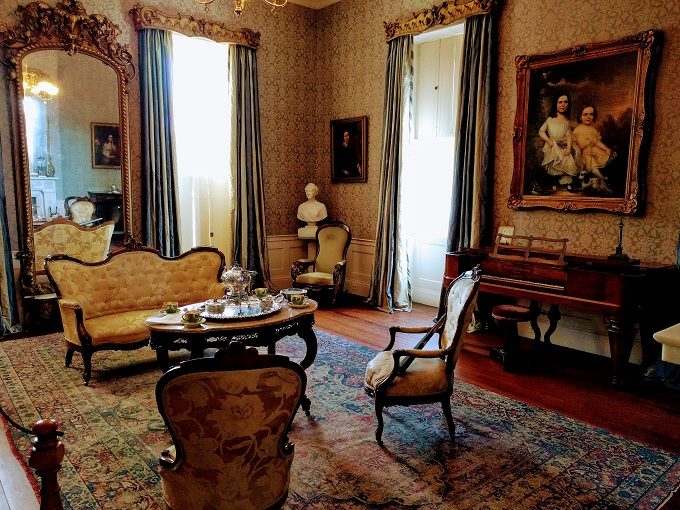
In the center of this parlor room was a table holding a silver tea set.
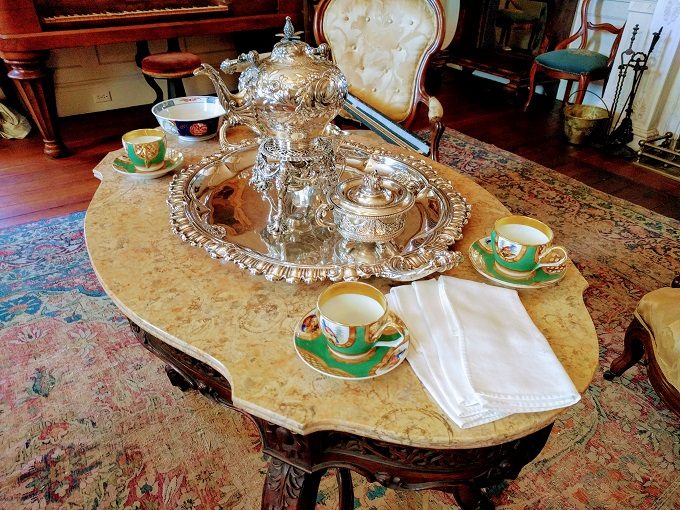
Due to the upstairs renovations, our tour of the Hampton-Preston House was shorter than that of the Robert Mills House. This tour therefore only lasted for about 45 minutes.
It was lunchtime by this point, so we were ready for some food. Not wanting to go too far due to our afternoon tour of the Mann-Simons Site, John recommended we visit the nearby Spotted Salamander cafe for lunch. This was a great suggestion as they had a delicious parsnip soup.
Final Thoughts
We enjoyed our tour of the Hampton-Preston House, although I preferred the Robert Mills House. Part of the reason is that there’s currently less to see at the Hampton-Preston House due to the upstairs renovations.
Despite that, it was still worth going on this tour as our tour guide John provided plenty of interesting history about the house and the local area. Once the upstairs bedrooms have been completed, this tour will be even better.
Other Historic Homes In Columbia SC
Check out our reviews of all four of the Historic Columbia House Tours:
- Robert Mills House
- Hampton-Preston House
- Mann-Simons Site
- Woodrow Wilson Family Home
Leave a Reply